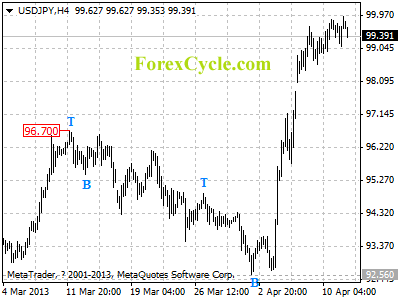By Bill Bonner
Back in the USA, stocks rose again yesterday. The Dow finished up
128 points. Gold fell $25 per ounce yesterday… and everybody seems to
think it will be going down forever. (A word of caution: probably
not.)
Last week, we went to São Paulo, Brazil. There, too, we found taxi
drivers who knew a lot more about monetary crises than the typical US
economist. Said one:
I remember. I was just a kid. But my
father would call and tell us to run to the grocery store. He had just
been paid. We’d dash for the grocery story, meet him there and buy
everything we could. We spent every cent in just a few minutes.
Our friend was recalling what it was like in the late 1980s in
Brazil. The government had caused inflation… then hyperinflation.
Prices rose so fast that as soon as people got some cash they ran to
the grocery store to spend it.
Later, there was no point. In 1990, hyperinflation in Brazil reached
30,000%. What cost 1 real (the Brazilian currency) in 1980 cost 1
trillion in 1997. The hyperinflation wiped out the middle class… and
wiped the shelves clean.
“It’s hard to run a business when you don’t know what your money is
going to be worth,” said our friend. “Businesses tended to just stop.”
From Harare to Buenos Aires…
And here in Argentina, there came an announcement this week. The
government will freeze the price of gasoline for the next six months.
Price controls didn’t work for the Romans. They didn’t work for the
Germans. They didn’t work for the Zimbabweans… or any of the other
hundreds of governments that have tried them. But who knows? Maybe
they’ll work for the Argentines…
Or gasoline will begin to disappear from the filling stations.
But inflation is just getting started here. The rate is officially
about 10%. Unofficially, it’s about 30%. Officially, you can trade a
dollar for 5.4 pesos. Unofficially, you’d be a fool to do so. The black
market rate is eight pesos to the dollar — and more.
So what do we do? We stick with the “king of cash,” the US dollar.
Which explains why the dollar is so popular. Every time we come to
Argentina, we bring the maximum — $10,000 — in $100 bills. Then, when
we need to buy things, we trade our dollars on the black market.
Isn’t that illegal? We don’t know.
Criminal Cash?
We went to a money changer in Buenos Aires. At first, we couldn’t
find it; there are no big signs to tell you where it is. So we asked a
policeman for directions. Turned out, he was standing right in front of
the money-changing shop.
It may be illegal. But it’s certainly popular… and, apparently,
tolerated. If everyone were forced to use dollars and exchange them at
the official rate, the economy would probably collapse tomorrow.
Instead, there is a whole subterranean economy that functions on
dollars. Which explains this item in the US press, from former domestic
policy advisor to President Reagan Bruce Bartlett:
A new report from the Federal
Reserve Bank of San Francisco explains cash has not only held its own
against competitors but continues to grow in popularity. Measured in
dollar terms, there is 42% more cash in circulation today than five
years ago.
Many economists believe that the
rise in cash is strongly related to growth in the so-called underground
economy — criminal activity such as drug dealing, as well as tax
evasion by people working off the books for cash. Strong evidence for
this proposition comes from examining the distribution of cash holdings
by denomination.
Criminal? What’s he talking about? People are just trying to do
business in a world where you can’t trust the local paper money or the
people who control it.
Right now, many people trust the dollar more than their home currencies. So the foreigners suck up dollars created by the Fed.
The Great Money Migration
This explains why there is so little consumer price inflation in
America — even while the Fed aggressively increases the money supply.
They ship it overseas… in $100 bills. Bartlett continues:
As one can see, 84% of the increase
in cash since 1990 has been in the form of $100 bills, which have risen
to 77% of the value of cash outstanding in 2012 from 52% in 1990.
I seldom use $100 bills for anything except Christmas gifts to
nieces and nephews, nor do I ever see people use them in stores. I
suspect that most people have the same experience. For large purchases,
most law-abiding people use checks or credit cards.
Not here they don’t. They use stacks of $100 bills! In Argentina, even if you buy a fancy house, you come with a suitcase full of $100s. More Bartlett:
One consequence of the rising share
of US currency held abroad is that it may distort analyses of the
relationship between the money supply and economic activity.
Incidentally, exports of cash appear in the Commerce Department’s
data on international transactions (Line 67). It is recorded as an
increase in foreign-owned assets in the US but is better thought of as
an almost costless way of financing a good chunk of our current account
deficit. It’s like borrowing money from foreigners that most likely
will never have to be paid back, at zero interest.
We are proud to be a part of this great money migration…
But we fear the day when it comes home!
Regards,

Bill
To learn more about Bill visit his Google+ Page or Bill Bonner’s Diary








